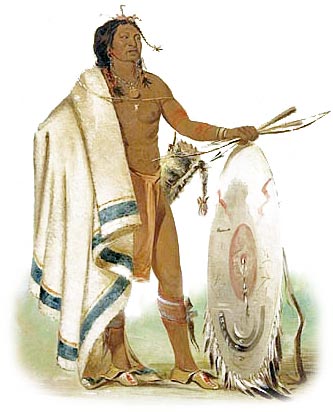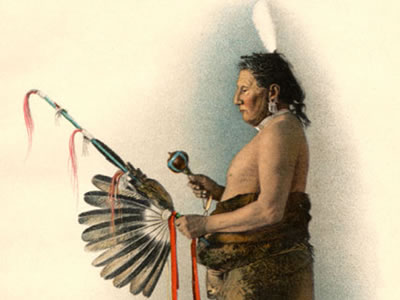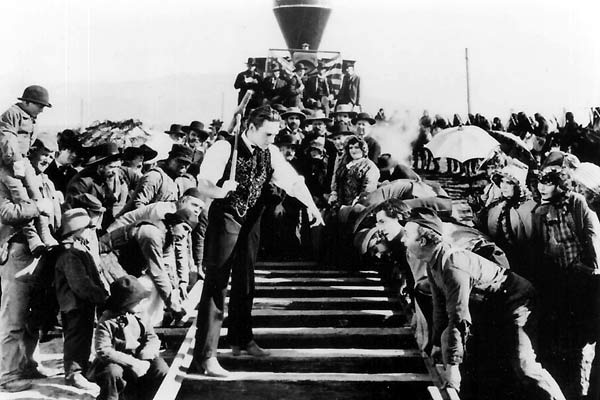Source:-(google.com.pk)
Pawnee Indians Culture Biography
Throughout the late eighteenth and early nineteenth centuries the Pawnee lived along major tributaries of the Missouri River in central Nebraska and northern Kansas. Historically one of the largest and most prominent Plains tribes, they numbered ten thousand or more individuals during the period of early contact with Europeans. From the end of the eighteenth century to the present, four divisions, generally designated as bands, have been recognized. Northernmost were the Skiris, who spoke a distinct dialect of Pawnee, a Caddoan language, and formed a separate tribe. Until the early nineteenth century the Skiri lived along the north bank of the Loup River, at one time in perhaps as many as thirteen villages, but during the early historical period they occupied a single village. South of them, generally on the south bank of the Platte River but extending as far south as the Republican River in Kansas, lived the Chawis, the Kitkahahkis, and the Pitahawiratas, each of whom usually comprised one village each. The latter three groups, today generally designated the South Band Pawnee, spoke a single dialect of the language.The Pawnee were semisedentary and represented the horticultural tradition on the Plains. Their life was characterized by alternating patterns of cultivation and High Plains bison hunting. The annual round of that life began in the spring, when they lived in permanent villages of dome-shaped earth lodges, domiciles often housing two or more families and twenty or more individuals. During this season economic and ritual activity focused on horticulture: women prepared and planted gardens of corn, beans, and squash; men engaged in religious rituals associated with gardening. In June members of each village traveled west onto the High Plains, where for nearly three months they lived in temporary bowl-shaped shelters and hunted bison. In late August they returned to their earth lodge villages to harvest the crops and to take up again a rich, variegated ritual life. In late October or November the people again left their villages for the winter hunt, during which they lived in bison-hide tipis. In February or March the groups returned to their earth lodges to begin the annual cycle anew.
The basic unit of Pawnee social organization was the village. In the first half of the nineteenth century the village and band frequently coincided, although at different times the number of villages in a band varied from two to five or six, each comprising forty to two hundred lodges and ranging in population from eight hundred to thirty-five hundred. At an earlier period the number of villages was apparently greater and the population of each much smaller.
Governing each band or village were four chiefs (a head chief and three subordinate chiefs), who wielded considerable authority. The head chief's position, and that of others, was hereditary, although an individual could achieve chiefly status through success in war. An important symbol of the chief's office, as well as a symbol of the village itself, was the sacred bundle, a religious shrine that represented the history of the band or village. Although the chief owned the bundle, and his wife cared for it, a priest (not the chief) knew its rituals and performed the religious ceremonies associated with it. In secular Pawnee society there were other notable offices. Each chief, for example, was assisted by four warriors who carried out his orders, and he had living in his lodge a crier or herald who made announcements to the village. Chiefs and successful warriors also had living in their lodges one or more young men known as "boys," who were aides to the man of status.
Fundamental to Pawnee ceremonial life is a cultural dichotomy between religion and shamanism that was manifested respectively in the rituals of priests and those of doctors. Rituals largely dominated Pawnee life and distinguished the Pawnee people from other Plains tribes. Although both priests and doctors shared a general concern with the supernatural and attempted to control natural phenomena, what distinguished them were the differences in their objectives, the deities they invoked, and the means by which they sought to achieve their ends.
Priests (kurahus) sought to promote village welfare as mediators between the people and the deities of the heavens (stars and other celestial phenomena) where everything in the world had its origin. Priests sought good fortune and an orderly world through knowledge of the complex rituals and knowledge associated with each village's sacred bundle, a collection of symbolic and ritual objects wrapped up in a buffalo hide casing. Every village had a sacred bundle that served as a sacred object that would save the village and as an altar for its rituals. Through rituals, priests were responsible for the weather, plant growth, fertility, and other generalized human concerns that for Pawnees were bountiful crops, plentiful buffalo, and success in war.
The deities of doctors (kuraa'u'), in contrast, were animals, birds, and other earthly beings. Their powers were curative, although they also included the ability to mesmerize people or to bring some malady or misfortune on an individual. Among the animals and birds there was no hierarchy. Although some, like the bear, were thought to be especially powerful, all animals, and even insects, had distinctive powers that they could impart to humans. They came to individuals in dreams, usually when a person was in a pitiful state, and taught them their knowledge, "blessing them" as Pawnees say. Often, as among most Plains tribes, a single animal would bestow such power, but among the Pawnee an additional, distinctive theme is the bestowal of various powers by a group of animals in an animal lodge. Such lodges were usually located underwater or on the bank of a body of water, and in them animals of various species were said to meet, arranging themselves in the same manner as Pawnee doctors in the doctors' lodge and performing like Pawnee doctors. Typically, a young man would fall asleep beside a body of water, and an animal would mesmerize him and take him below into the animal lodge, where the animals would invariably pity the young man and bestow their powers on him.
Pawnee. A confederacy belonging to the Caddoan family. The name is probably derived from parika, a horn, a term used to designate the peculiar manner of dressing the scalp-lock, by which the hair was stiffened with paint and fat, and made to stand erect and curved like a horn. This marked features of the Pawnee gave currency to the name and its application to cognate tribes. The people called themselves Chahiksichahiks, `men of men.'
In the general northeastwardly movement of the Caddoan tribes the Pawnee seem to have brought up the rear. Their migration was not in a compact body, but in groups, whose slow progress covered long periods of time. The Pawnee tribes finally established themselves in the valley of Platte river, Nebr., which territory, their traditions say, was acquired by conquest, but the people who were driven out are not named. It is not improbable that in making their way north east the Pawnee may have encountered one or more waves of the southward movements of Shoshonean and Athapascan tribes. When the Siouan tribes entered Platte valley they found the Pawnee there. The geographic arrangement always observed by the four leading Pawnee tribes may give a hint of the order of their northeastward movement, or of their grouping in their traditionary southwestern home. The Skidi place was to the north west, and they were spoken of as belonging to the upper villages; the Pitahauerat villages were always downstream; those of the Chaui, in the middle, or between the Pitahauerat and the Kitkehahki, the villages of the last-named being always upstream. How long the Pawnee resided in the Platte valley is unknown, but their stay was long enough to give new terms to 'west' and 'east,' that is, words equivalent to 'up' or 'down' that eastwardly flowing stream.
Pawnee Indians Culture Biography
Throughout the late eighteenth and early nineteenth centuries the Pawnee lived along major tributaries of the Missouri River in central Nebraska and northern Kansas. Historically one of the largest and most prominent Plains tribes, they numbered ten thousand or more individuals during the period of early contact with Europeans. From the end of the eighteenth century to the present, four divisions, generally designated as bands, have been recognized. Northernmost were the Skiris, who spoke a distinct dialect of Pawnee, a Caddoan language, and formed a separate tribe. Until the early nineteenth century the Skiri lived along the north bank of the Loup River, at one time in perhaps as many as thirteen villages, but during the early historical period they occupied a single village. South of them, generally on the south bank of the Platte River but extending as far south as the Republican River in Kansas, lived the Chawis, the Kitkahahkis, and the Pitahawiratas, each of whom usually comprised one village each. The latter three groups, today generally designated the South Band Pawnee, spoke a single dialect of the language.The Pawnee were semisedentary and represented the horticultural tradition on the Plains. Their life was characterized by alternating patterns of cultivation and High Plains bison hunting. The annual round of that life began in the spring, when they lived in permanent villages of dome-shaped earth lodges, domiciles often housing two or more families and twenty or more individuals. During this season economic and ritual activity focused on horticulture: women prepared and planted gardens of corn, beans, and squash; men engaged in religious rituals associated with gardening. In June members of each village traveled west onto the High Plains, where for nearly three months they lived in temporary bowl-shaped shelters and hunted bison. In late August they returned to their earth lodge villages to harvest the crops and to take up again a rich, variegated ritual life. In late October or November the people again left their villages for the winter hunt, during which they lived in bison-hide tipis. In February or March the groups returned to their earth lodges to begin the annual cycle anew.
The basic unit of Pawnee social organization was the village. In the first half of the nineteenth century the village and band frequently coincided, although at different times the number of villages in a band varied from two to five or six, each comprising forty to two hundred lodges and ranging in population from eight hundred to thirty-five hundred. At an earlier period the number of villages was apparently greater and the population of each much smaller.
Governing each band or village were four chiefs (a head chief and three subordinate chiefs), who wielded considerable authority. The head chief's position, and that of others, was hereditary, although an individual could achieve chiefly status through success in war. An important symbol of the chief's office, as well as a symbol of the village itself, was the sacred bundle, a religious shrine that represented the history of the band or village. Although the chief owned the bundle, and his wife cared for it, a priest (not the chief) knew its rituals and performed the religious ceremonies associated with it. In secular Pawnee society there were other notable offices. Each chief, for example, was assisted by four warriors who carried out his orders, and he had living in his lodge a crier or herald who made announcements to the village. Chiefs and successful warriors also had living in their lodges one or more young men known as "boys," who were aides to the man of status.
Fundamental to Pawnee ceremonial life is a cultural dichotomy between religion and shamanism that was manifested respectively in the rituals of priests and those of doctors. Rituals largely dominated Pawnee life and distinguished the Pawnee people from other Plains tribes. Although both priests and doctors shared a general concern with the supernatural and attempted to control natural phenomena, what distinguished them were the differences in their objectives, the deities they invoked, and the means by which they sought to achieve their ends.
Priests (kurahus) sought to promote village welfare as mediators between the people and the deities of the heavens (stars and other celestial phenomena) where everything in the world had its origin. Priests sought good fortune and an orderly world through knowledge of the complex rituals and knowledge associated with each village's sacred bundle, a collection of symbolic and ritual objects wrapped up in a buffalo hide casing. Every village had a sacred bundle that served as a sacred object that would save the village and as an altar for its rituals. Through rituals, priests were responsible for the weather, plant growth, fertility, and other generalized human concerns that for Pawnees were bountiful crops, plentiful buffalo, and success in war.
The deities of doctors (kuraa'u'), in contrast, were animals, birds, and other earthly beings. Their powers were curative, although they also included the ability to mesmerize people or to bring some malady or misfortune on an individual. Among the animals and birds there was no hierarchy. Although some, like the bear, were thought to be especially powerful, all animals, and even insects, had distinctive powers that they could impart to humans. They came to individuals in dreams, usually when a person was in a pitiful state, and taught them their knowledge, "blessing them" as Pawnees say. Often, as among most Plains tribes, a single animal would bestow such power, but among the Pawnee an additional, distinctive theme is the bestowal of various powers by a group of animals in an animal lodge. Such lodges were usually located underwater or on the bank of a body of water, and in them animals of various species were said to meet, arranging themselves in the same manner as Pawnee doctors in the doctors' lodge and performing like Pawnee doctors. Typically, a young man would fall asleep beside a body of water, and an animal would mesmerize him and take him below into the animal lodge, where the animals would invariably pity the young man and bestow their powers on him.
Pawnee. A confederacy belonging to the Caddoan family. The name is probably derived from parika, a horn, a term used to designate the peculiar manner of dressing the scalp-lock, by which the hair was stiffened with paint and fat, and made to stand erect and curved like a horn. This marked features of the Pawnee gave currency to the name and its application to cognate tribes. The people called themselves Chahiksichahiks, `men of men.'
In the general northeastwardly movement of the Caddoan tribes the Pawnee seem to have brought up the rear. Their migration was not in a compact body, but in groups, whose slow progress covered long periods of time. The Pawnee tribes finally established themselves in the valley of Platte river, Nebr., which territory, their traditions say, was acquired by conquest, but the people who were driven out are not named. It is not improbable that in making their way north east the Pawnee may have encountered one or more waves of the southward movements of Shoshonean and Athapascan tribes. When the Siouan tribes entered Platte valley they found the Pawnee there. The geographic arrangement always observed by the four leading Pawnee tribes may give a hint of the order of their northeastward movement, or of their grouping in their traditionary southwestern home. The Skidi place was to the north west, and they were spoken of as belonging to the upper villages; the Pitahauerat villages were always downstream; those of the Chaui, in the middle, or between the Pitahauerat and the Kitkehahki, the villages of the last-named being always upstream. How long the Pawnee resided in the Platte valley is unknown, but their stay was long enough to give new terms to 'west' and 'east,' that is, words equivalent to 'up' or 'down' that eastwardly flowing stream.
Pawnee Indians Culture


Pawnee Indians Culture


Pawnee Indians Culture


Pawnee Indians Culture


Pawnee Indians Culture


Pawnee Indians Culture


Pawnee Indians Culture


Pawnee Indians Culture


Pawnee Indians Culture


Pawnee Indians Culture


Pawnee Indians Culture


Pawnee Indians Culture


Pawnee Indians Culture